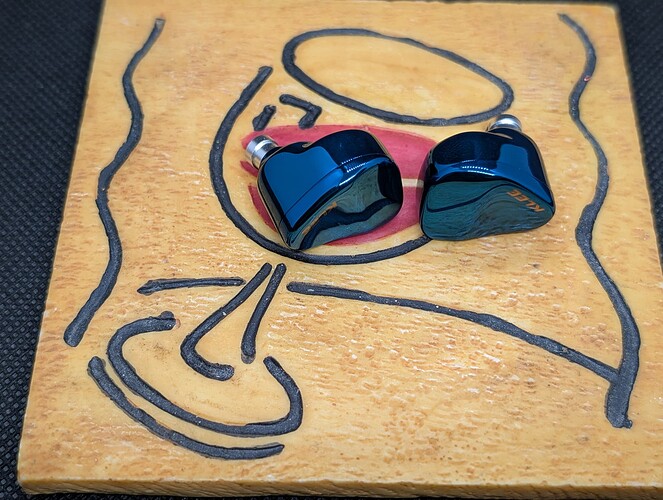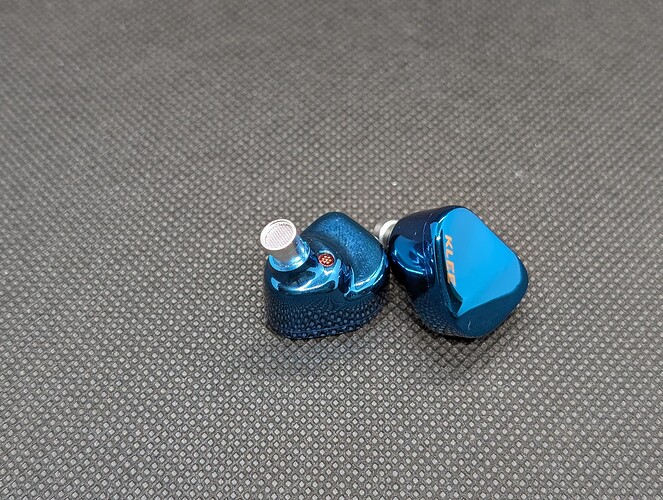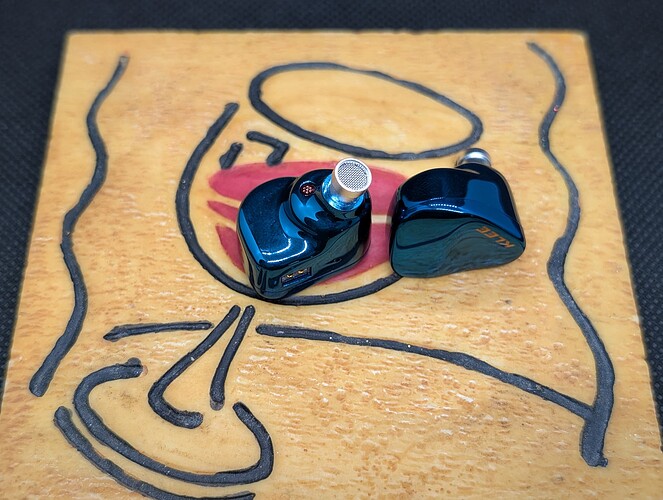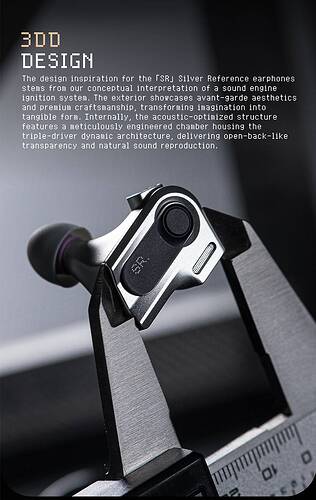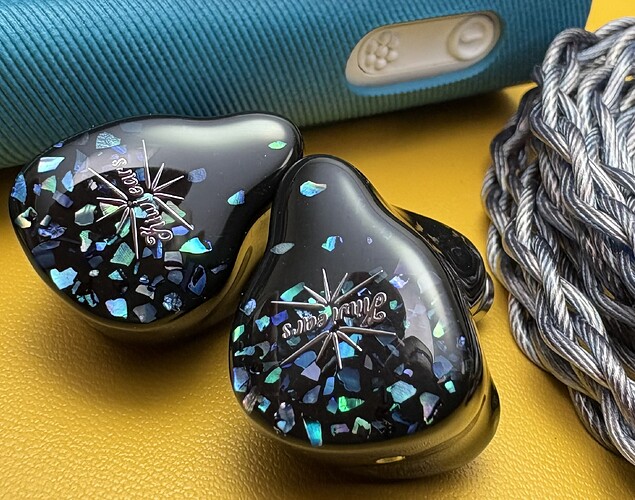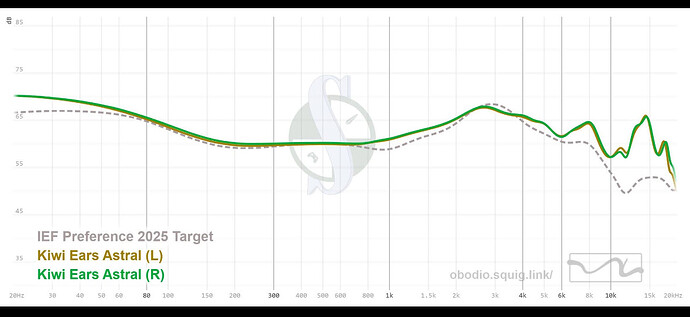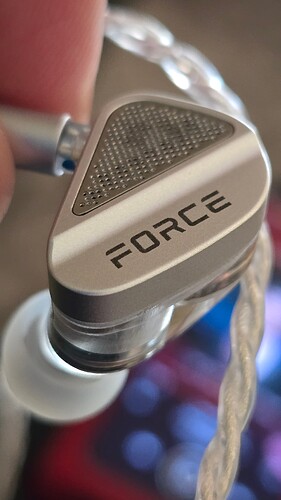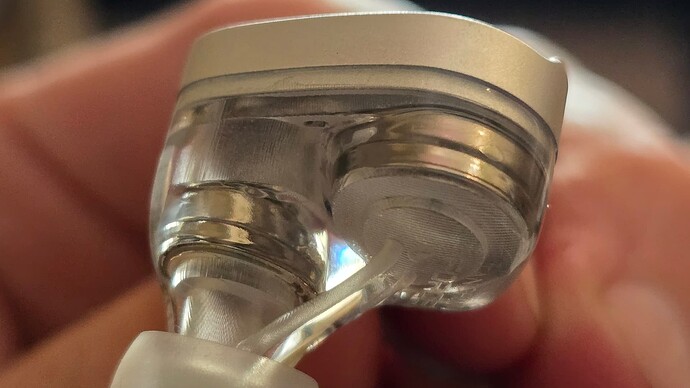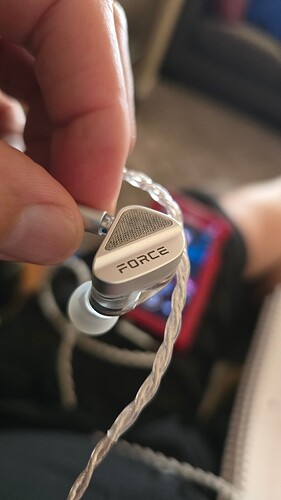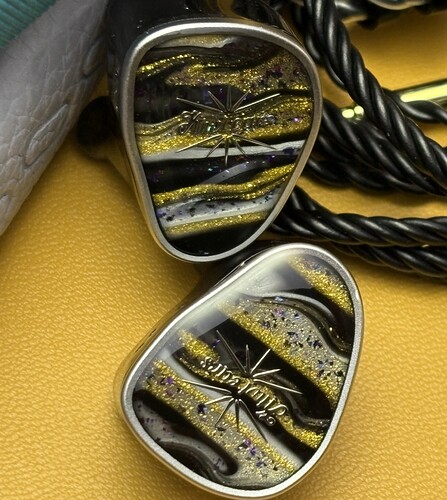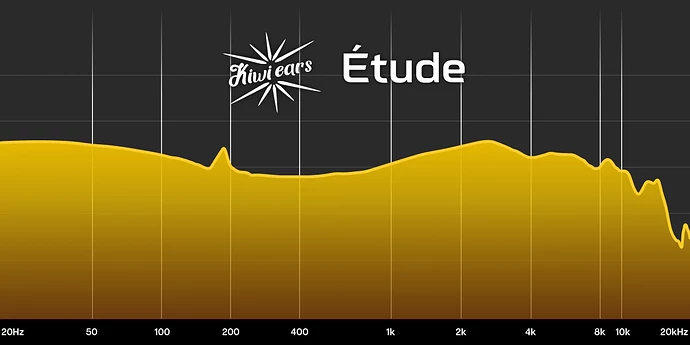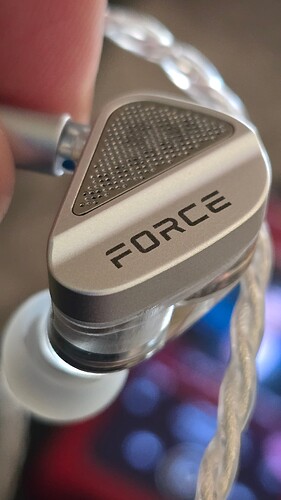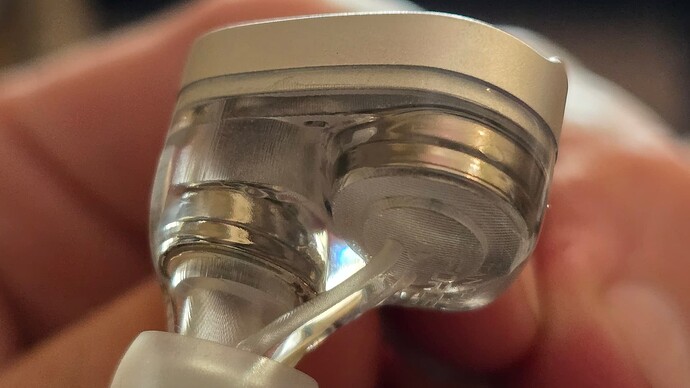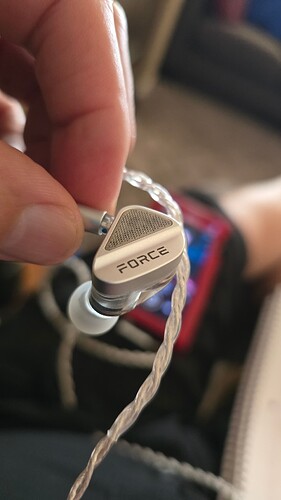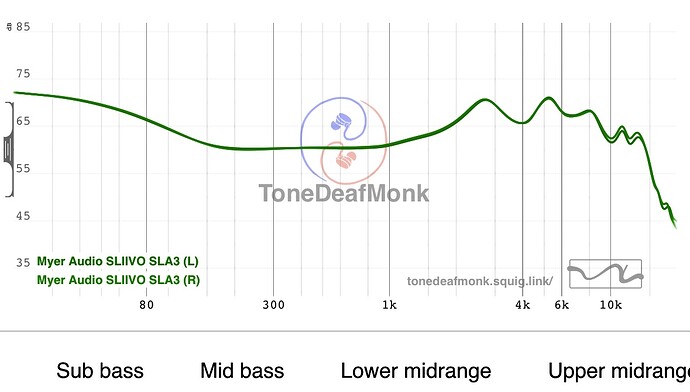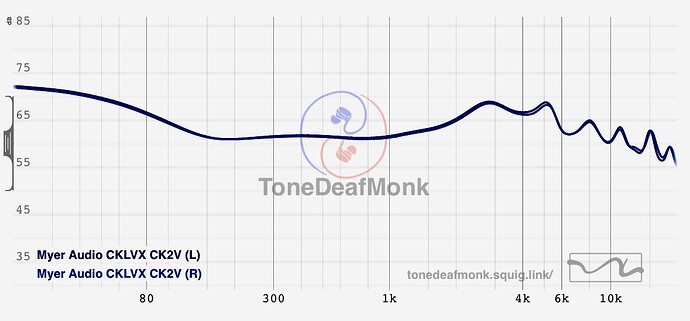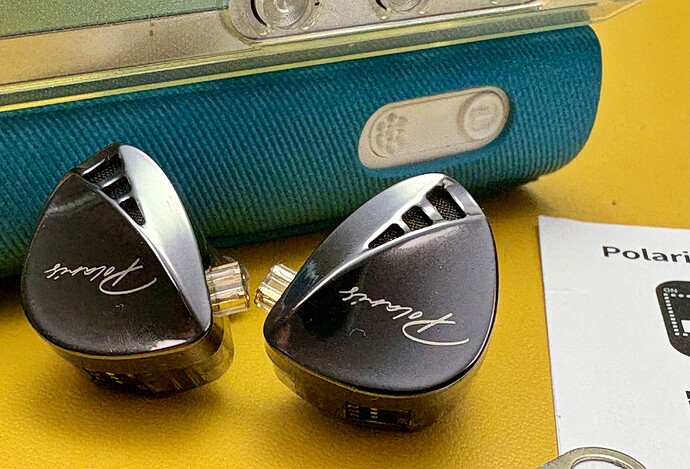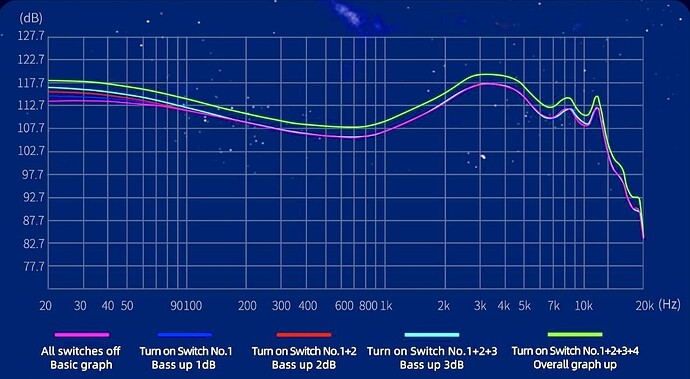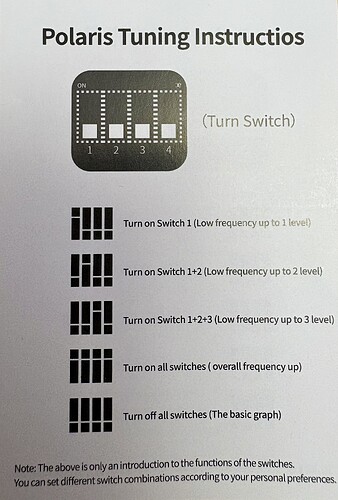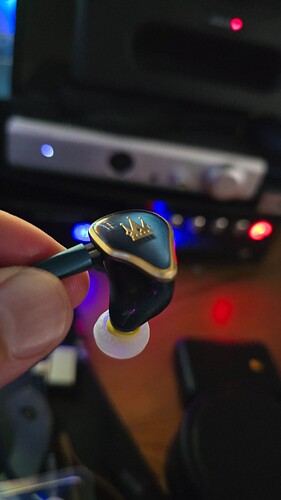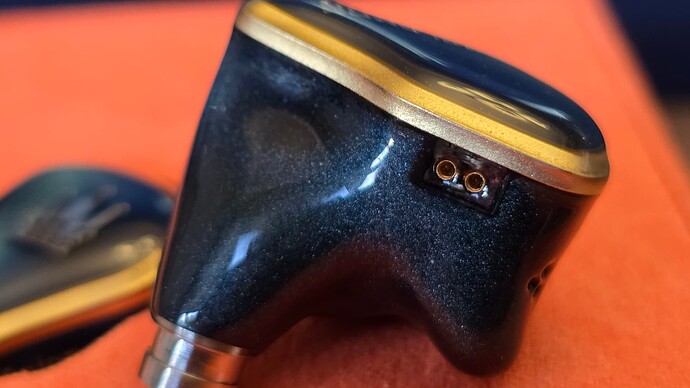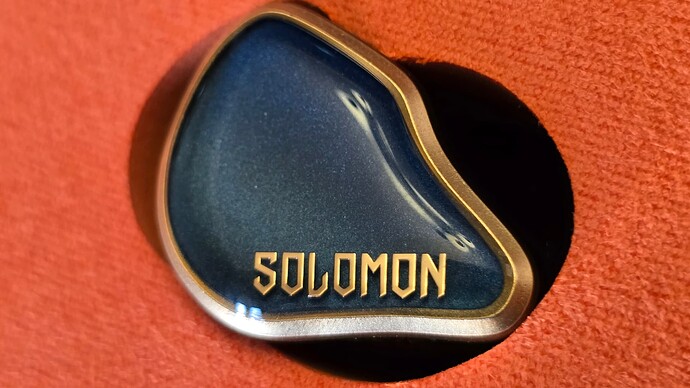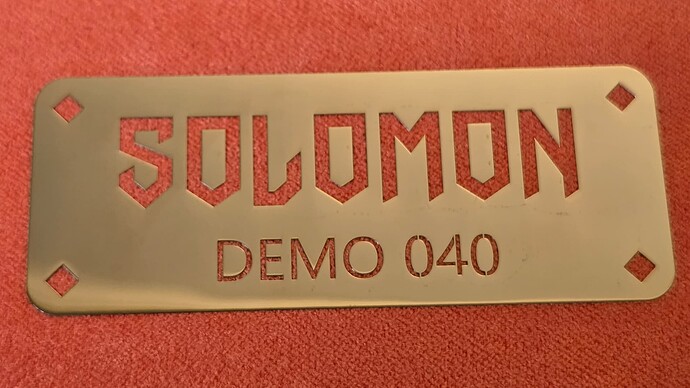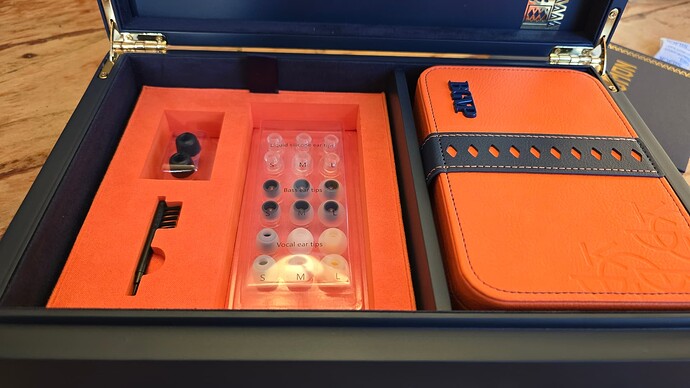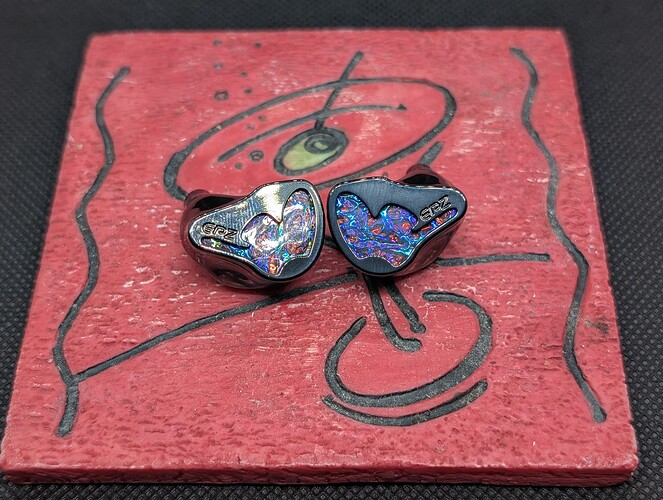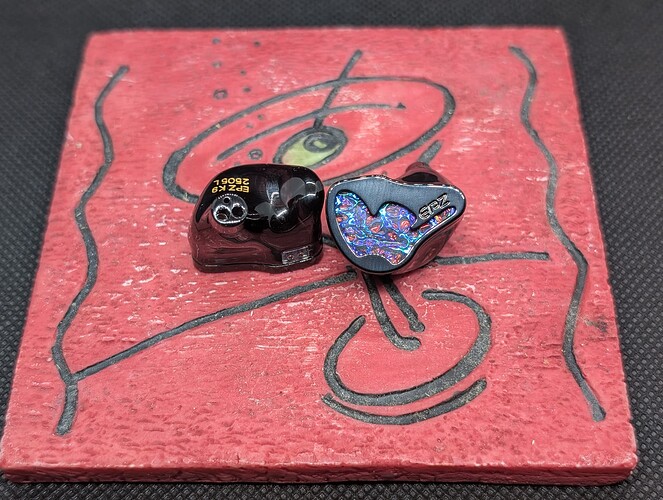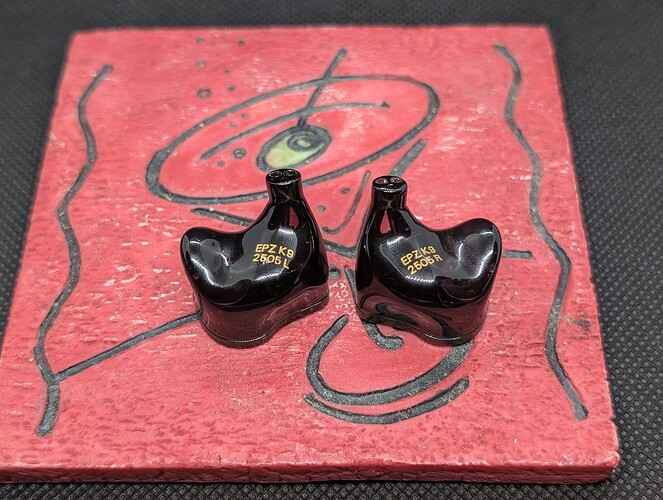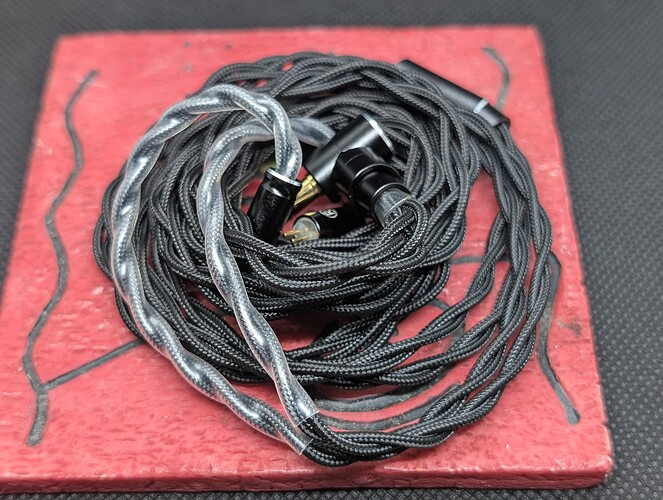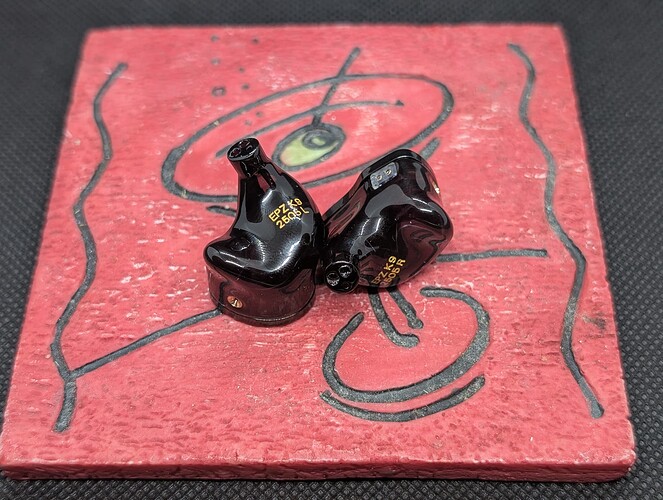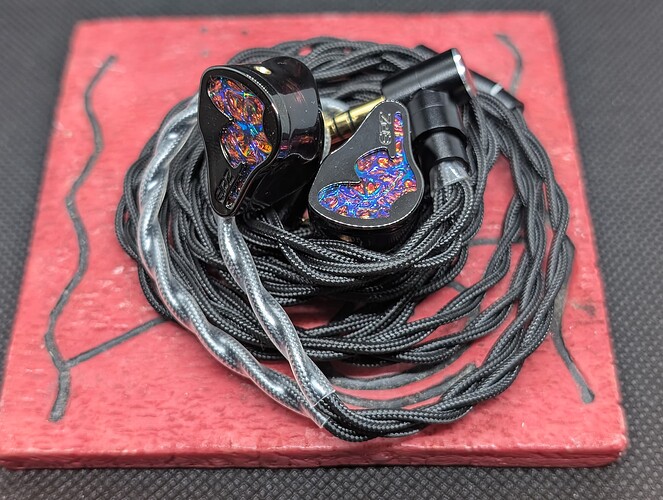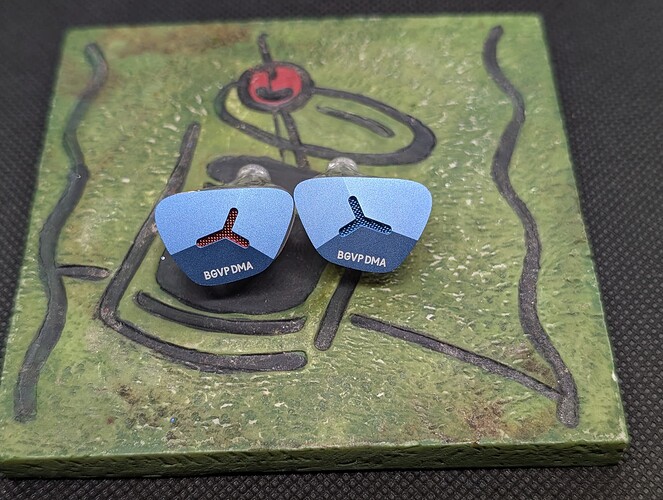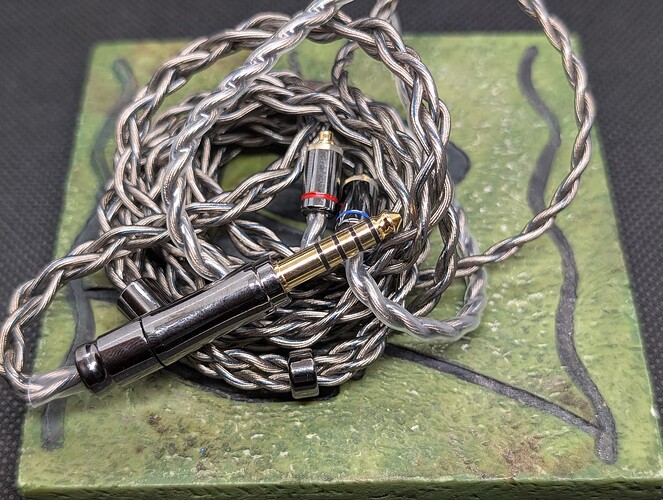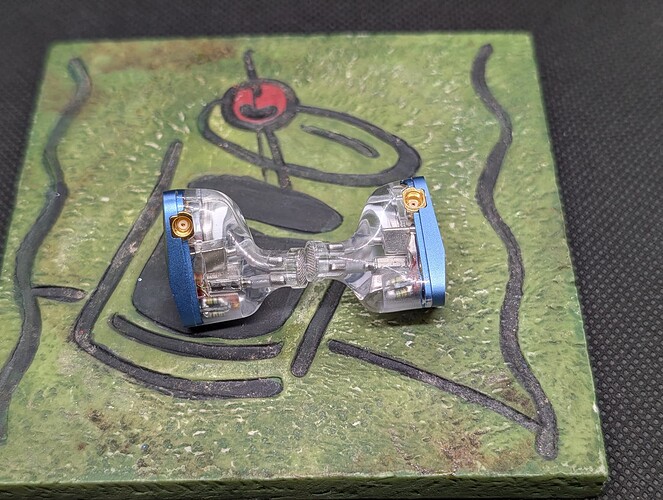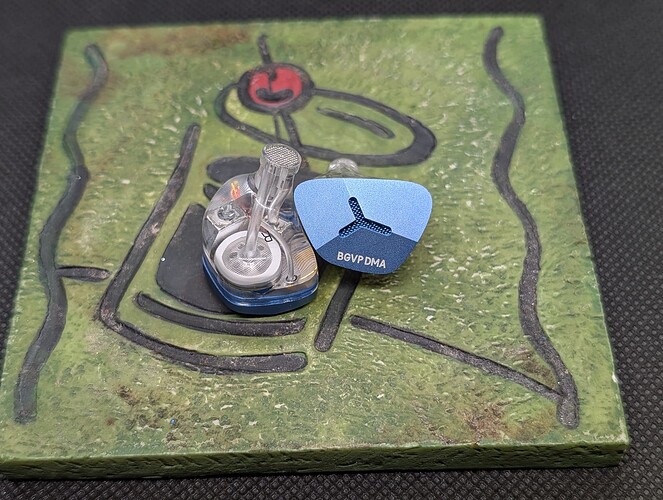iBasso Jr. Klee – The Musical Unknown
Preamble:
iBasso is a brand well known for its standout DAPs. What seems to be the case is that many don’t know how good they are at producing great-sounding IEMs as well. The Jr. Klee is an unpretentious product boasting a single Lithium-Magnesium alloy dome as the only driver housed in a simple stainless-steel shell.
In the hands of a master, simple is a good thing, and with the Jr Klee iBasso has shown that they know what they are doing. The Klee is fairly easy to drive and at its asking price of $80, does surprisingly well with more resolving sources. The Jr. Klee puts many competitors on notice with its even-handed musicality. As per usual, tip selection is important, and I would recommend some of the wide-bored variety.
Tuning-wise we have a mild V-shaped presentation with a touch of sub-bass prominence in the lowest registers and treble. Overall, though, the Klee comes off as more balanced than an aggressive V-shape.
Read on to find out more.
SPECS:
Driver: 10mm dual magnetic circuit dynamic driver
Diaphragm: Lithium-Magnesium alloy dome
Earpiece Plug: 0.78mm-2pin
Plug: 3.5mm/4.4mm Replaceable Plug
Frequency Response: 20Hz-40kHz
Impedance: 22Ω
Sensitivity: 112dB
THD: ≤0.5%
Build & Fit:
As previously mentioned, the Jr. Klee is an unassuming-looking iem. Its stainless-steel shells are beautifully finished and coloured in an interesting shade of blue. They are of a medium size with a prominent nozzle protrusion; all this makes for an easy fit in my ears.
I did not receive any accessories, so I cannot comment on the retail presentation.
SOUND:
Bass:
Bass goes deep with ample control and speed. The bass has a taught richness to it that I found pleasing. This level of bass control sets the Klee apart from many of its competitors. The low end has good power and drive when the track calls for it. “Angel” by Massive Attack has a driving bassline with audible texture, and the Klee did wonderfully here, relaying the power while laying bare the textured low end.
The Klee’s bass is agile, lending itself well to Jazz tracks such as “No Worries” by the Robert Glasper Trio, yet still able to project good drive on house music tracks such as “Stella” by A Guy Called Gerald.
The Low end of the iBasso Jr. Klee is done very well. A combination of a fantastic drive, coupled with great tuning, has resulted in a wonderful sound.
Midrange:
The midrange is clean and open-sounding, with good quantities of both macro and micro details heard. The lower mids do have a touch of warmth that adds to the organic presentation.
Both male and female vocals sounded clean and distinct, not coming across as enhanced, particularly in the case of female vocals, which is a common issue in many earphones these days. Listening to “Love You To The Letter” by Anita Baker, the soothing vocal delivery was a pleasure.
Pinna gain is kept in check, and any harshness is minimal at worst. Timbre is good, and dynamic passages sound clean and unrestrained. Transients are also relayed well with sharp attack and natural falloff. Layering and separation are also notable, the Klee besting many of its rivals with a great driver and capable tuning.
In the midrange, where the Jr. Klee excels, lies in its unbarred cleanliness. The listening experience is where the listener feels that they are missing nothing. While this is a combination of many factors, iBasso has gotten the recipe right. While it may not possess the absolute refinement of some more expensive models, such as the Timsock TS-316, the Klee more than holds its ground among competitors in its price range and even above.
Treble:
The treble is clean and extended with good quantities of sparkle and air. The Klee and a few others are living proof that single-driver equipped earphones can have sound with great extension on both ends of the frequency spectrum.
There is some prominence noted in the treble range, but not enough to hurt the feelings of those treble-sensitive folks. No harshness or splashiness was noted, and the treble, as with the rest of the frequency range, showed great control.
The treble here complements the overall tuning with exceptionally open and clear-sounding sonics.
IMAGING & SOUNDSTAGE:
The iBasso Jr. Klee throws up a moderately sized soundstage with good stability in its imaging. The notable layering and separation, combined with the impressive speed of the driver, allow for the space between the instruments to be heard.
One thing I noticed is the Klee’s ability to project the space between the notes. This is rare in earphones in this price range and adds to the immersive quality while listening.
VERSUS:
-QOA Mimosa-
The QOA Mimosa is another standout iem which goes its own way when it comes to tuning. The Mimosa has a comparatively more vibrant sound with arguably better detail retrieval but just.
Bass is where the Mimosa takes the lead with more impact and comparable speed and detail. In the midrange, the Mimosa and Klee are not that far apart, with the former having a little more vibrancy while the latter being more balanced.
The treble again sees the Mimosa having more energy while remaining composed. The Klee is no slouch in energy here but may be a better fit for treble-sensitive folks. Each has good detail retrieval here, but the Klee sounds just a touch more natural.
CONCLUSION:
I had a few iems on my desk and just popped the Klee in my ears for a quick listen. This “quick listen” turned into many hours of enjoyable music.
iBasso has never marketed their iems as actively as they do their daps, and I think this is a shame. The Klee is the second iBasso iem I have heard, and both times I have been more than impressed. The Klee imho, has been slept on, and it is unfortunate.
The Jr. Klee offers up quality, clean, and clear sound with a smattering of organics thrown in. At $80, I do recommend that anyone looking for quality sound in that price range add the Klee to their shopping list. The iBasso Jr. Klee gets a solid recommendation.
Nice one Benny, this one was definitely a sleeper.
Came out the same time as the Hiby Yacht that was not nearly as good but got marketed to hell!
KIWI EARS ASTRAL
7 Driver hybrid IEM. $299.00 usd.
DRIVERS:
1 Bioceramic diaphragm Dynamic Driver + 6 Balanced Armatures
SENSITIVITY:
105dB (±1)
IMPEDANCE:
23Ω (±1)
FREQUENCY RESPONSE:
10Hz - 22kHz
![]() Preamble:
Preamble:
Thanks and sincere appreciation go out to Kiwi Ears for providing the Astral IEM review unit to the Canuck Audioholics.
@Tone Deaf Monk
@Bennet Kelly
@Kaye Dee
I only received the ear pieces, modular cable, and case, so I’m not able to comment in detail on the retail packaging experience.
What I received appears to be of good quality.
![]() Pros and Cons:
Pros and Cons:
![]() Vented 3D resin shells are smooth and seamless, commensurate with what we have come to expect from this type of shell.
Vented 3D resin shells are smooth and seamless, commensurate with what we have come to expect from this type of shell.
They have a small “wing” which doesn’t do much to help position nozzle alignment for my ears.
Astral is comfortable in ear. But nozzle angle a bit off for me, and I had some challenge getting a secure anchor and seal. Fit is a unique and individual thing, so this is a personal nit pick.
![]() The stock modular cable is an above average 4 strand offering. Reasonably supple, appears to feature metal encased fittings, a chin toggle that stays in place, and ear hooks that work well to support the ear pieces in ear.
The stock modular cable is an above average 4 strand offering. Reasonably supple, appears to feature metal encased fittings, a chin toggle that stays in place, and ear hooks that work well to support the ear pieces in ear.
3.5 and 4.4mm terminations included.
![]() Kiwi Ears doesn’t specify the wire composition of the stock modular cable.
Kiwi Ears doesn’t specify the wire composition of the stock modular cable.
I’m leaning toward it being silver plated copper, based solely on what I can see through the insulation layer.
![]() Astral drives easily off a phone with a basic dongle.
Astral drives easily off a phone with a basic dongle.
![]() Source device does shape playback presentation (i.e. warmer vs more resolving devices).
Source device does shape playback presentation (i.e. warmer vs more resolving devices).
However I don’t find Astral source device fussy, it sounds good on all I tried, but, source selection can be an effective option for dialling in a personal synergy with this IEM.
![]() I would describe the tuning as a U or mild V shape, with a distinct but not overbearing upper mids lift, and a solid bass foundation.
I would describe the tuning as a U or mild V shape, with a distinct but not overbearing upper mids lift, and a solid bass foundation.
![]() Source Devices:
Source Devices:
I rolled several source devices.
iPhone 16 with EPZ TP35 and AK HC4 dongles.
Hiby R4 and R8ii, Astell &Kern SP2000T and ACTIVO P1, iBasso DX340, and the FiiO JM21 for DAPs.
I’m not going to go into detail on each device.
I very much enjoyed the additional clarity and detail on the more resolving Daps, as well as the additional air and sparkle they provided.
However, on certain tracks, the upper mids became a bit “too clear and detailed”, and a bit sharp. I found this clearly noticeable on the track No Worries by the Robert Glasper Trio, where the mids notes on the piano became too sharp and bright, and, well not harsh or annoying, did not sound natural.
The warmer sources were a little looser in the bass, and softened the upper mids nicely.
This was at the expense of some upper mids detail, and sparkle and air, but Astral has enough to spare.
For my casual listening preference, a warmer source was the best fit.
The Hiby R8ii had the best synergy for my personal preference, but the FiiO JM21 also sounded very nice paired with the Astral.
I chose the JM21 for the sound evaluation, it adds a little extra energy on the top end compared to the R8ii.
![]() Equipment:
Equipment:
![]() Kiwi Ears Astral IEM aged 50 plus hours.
Kiwi Ears Astral IEM aged 50 plus hours.
![]() FiiO Jade Audio JM21 DAP, mid gain, 4.4mm out.
FiiO Jade Audio JM21 DAP, mid gain, 4.4mm out.
![]() Stock modular cable, with 4.4mm termination.
Stock modular cable, with 4.4mm termination.
![]() Eletech Baroque wide bore ear tips.
Eletech Baroque wide bore ear tips.
![]() Sound:
Sound:
Astral has a nicely elevated bass shelf and the sub bass can pull low in the head space with genuine sub woofer rumble and texture on tracks that take it there.
Mid bass has an authoritative and impactful thump that is well defined from the sub bass.
There is enough bass carry over into the mids to add warmth, and a little extra to fill the head space without interfering with mids detail and high end sparkle.
Lower mids are recessed, upper mids recover nicely with a fairly gentle rise into the pinna gain, topping out just below the bass shelf.
Mids have very good macro detail retrieval, and some micro detail, which carry into the highs.
clear and accurate with natural tonality and timbre.
On a warmer source device I’m not hearing any threat of harshness or sibilance.
Male and female vocals are elevated and also detailed and clear with accurate tonality.
The highs roll off early and are carried mostly by the upper mids.
There is a bump around 8K that adds some welcome air and sparkle.
Stage is more intimate than expansive but manages enough open space to allow decent separation and individuality of instruments and vocals.
Width is nicely outside the ears, height top to bottom is very good with enough air and sparkle to reach the top of skull, and, when called for sub, bass that reaches near the chin.
Front to rear depth is good. I would not go so far as to call it truly “holographic” but there is a good sense of instruments and vocals presenting forward or behind one another. Overall a good head filling presentation.
Summary:
The Astral doesn’t have a specific standout strength.
No elevated skull rattling bass shelf, no ultra open and defining mids, no crystal clear and highly resolving treble.
Its strength lies in the sum of all its parts.
It just sounds good, and is easy to get lost in lengthy and enjoyable listening sessions.
Without a standout sound signature feature, Astral may struggle to define itself in the (just barely) under $300 usd segment.
But…. Astral does define itself, simply with the lack of needing an ace up the sleeve to just sound really good.
![]() My music sources:
My music sources:
Qobuz, and, FLAC and DSD files stored on the SD cards of my daps.
My music genre are primarily Rock, Blues, Jazz, Symphonic, Country, Rap, R&B, Pop, Electronic.
Enjoy your music. ![]()
Excellent impressions on this one , tha ks so much Kevin for your impressions.
Thanks Monk! ![]()
Not my favorite tuning going to honest very Genre specific, vocal forward upper mids and the lower bass shelf doesn’t have enough energy , and the bass that’s there is more thump without attack and impact.
KIWI EARS ETUDE
A Sonic Joyride
5 Driver Bone Conduction IEM.
$119.00 usd
1 x 10mm Beryllium diaphragm Dynamic Driver for Bass
1 x Kiwi Vibration Transducer (KVT) Bone Conduction Driver for low and mid enhancement.
1 x in house BA Driver for mids.
2 x in house BA Drivers for high/ultra high.
**Sensitivity: 104dB SPL/mW
**Frequency Response: 20Hz – 20kHz
**Impedance: 5Ω
![]() Preamble:
Preamble:
Thanks and sincere appreciation go out to Kiwi Ears for providing the Etude IEM review unit to the Canuck Audioholics.
@Tone Deaf Monk
@Bennet Kelly
@Kaye Dee
I only received the ear pieces, cable, and case, so I’m not able to comment in detail on the retail packaging experience.
What I did receive is pretty standard fare. Ear pieces are nice, 3.5 mm cable is a step up from budget, carry case is decent, and useable.
It does come with 9 pair of ear tips ![]()
Pros and Cons:
![]() Vented 3D printed shells are on par with what we have come to expect, smooth, clean and seamless lines.
Vented 3D printed shells are on par with what we have come to expect, smooth, clean and seamless lines.
Sparkly gold and black faceplates with a metal trim. Overall an unassuming, but nice looking presentation.
Medium sized, with a mid point insertion depth in my ears, they fit, anchor, and seal well.
![]() Kiwi Ears doesn’t specify the wire composition of the stock, 4 strand, 3.5mm terminated cable, but, sonically, I find it pairs very well with Etude.
Kiwi Ears doesn’t specify the wire composition of the stock, 4 strand, 3.5mm terminated cable, but, sonically, I find it pairs very well with Etude.
It’s easy to initially mistake this cable as an unremarkable budget offering, but, it has a nice tight twist, high quality hardware, and a chin toggle that slides easy and stays in place.
Looks to be durable and well made.
![]() I was initially skeptical about the KVT (Kiwi Vibration Transducer) bone conduction driver.
I was initially skeptical about the KVT (Kiwi Vibration Transducer) bone conduction driver.
After spending several hours listening to Etude I now believe it is extremely well implemented, with one minor caveat that I will clarify in KVT below.
![]() Superior “holographic” staging.
Superior “holographic” staging.
![]()
![]() Benefits from a source device that can deliver decent power.
Benefits from a source device that can deliver decent power.
![]() Source Devices:
Source Devices:
I rolled several source devices and found that while Etude isn’t difficult to drive, it does scale very nicely with a more capable source device that can deliver adequate power to fully wake the drivers.
I choose the Astell and Kern SP2000T set to OP amp mode for the sound evaluation.
![]() KVT (Kiwi Vibration Transducer):
KVT (Kiwi Vibration Transducer):
The first time I had the Etude in ear I started out listening to some EDM and House music. (i.e. strong bass focus)
On some tracks the bass sounded like it was being played “inside a barrel or a tube”.
Depending on personal preference, this could be viewed as “a unique and interesting bass presentation” or “odd and unnatural”
![]() Equipment:
Equipment:
![]() Kiwi Ears Étude IEM aged ?? Hours.
Kiwi Ears Étude IEM aged ?? Hours.
![]() Astell and Kern SP2000T DAP set to OP amp mode, 3.5mm out.
Astell and Kern SP2000T DAP set to OP amp mode, 3.5mm out.
![]() Stock 3.5mm cable
Stock 3.5mm cable
![]() Eletech Baroque wide bore ear tips.
Eletech Baroque wide bore ear tips.
![]() Sound:
Sound:
Etude’s bass is very textured and dynamic thanks, in part at least, to the KVT driver.
Sub bass has a strong rumble, but fairly quick transients that keep it in place preventing it from pulling really low in the headspace, or, expanding and overwhelming the entire headspace.
This “constraint” is most notable on genre’s that feature strong electronic generated sub bass.
Mid bass has good presence and impact, and is well defined from the sub bass.
It has the ability to punch through the sub bass and hold its own.
This tighter, somewhat “constrained” or “managed” sub bass presentation is what I perceive as sounding “inside a barrel”.
This artifact is limited to select genres/tracks, but those who crave unrestrained head filling sub bass may be found wanting.
Mids and vocals are full and clear with very good macro and micro detail.
They are elevated and forward but not excessively keeping them from becoming harsh or sibilant.
Highs roll off early and are carried primarily by the upper mids. While there is reasonable air and sparkle, micro detail and a vibrant high end is somewhat lacking.
Staging is where I find the KVT driver shines.
The head stage is intimate and holographic, but not the traditional concept of holographic.
Width is good, outside the ears. Top to bottom height reaches high in the head space, but limited lower reach. Front to rear depth is good.
Where the “holographic” comes in is a sense of “individual embodiment” endowed to instruments and vocalists.
Rather than adding depth to the entire head stage, each instrument has an added sense of depth, which adds dimension to imaging and layering.
![]() Summary:
Summary:
It was difficult for me to transpose the Etude experience to words.
The bottom line; despite some technical short comings, the KVT bone conduction implementation is very well done and the Etude is a super fun listen for me.
When I sit down for a listening session I’m definitely drawn in, but not into a relaxed musical drift, but a toe tapping joy ride, mesmerized by the life like 3D embodiment of the individual players.
Etude retails at $129.00 usd.
And my experience and opinion is that it is worthy.
![]() Trivia:
Trivia:
“An “etude” (pronounced ay-TOOD or eh-TOOD) is a French word that translates to “study” in English.
In the context of music, it refers to a short composition designed to be a musical exercise, often focusing on a specific technical skill for the performer”.
![]() Compared to Apevoix Grit:
Compared to Apevoix Grit:
6 Driver with Bone Conduction.
$199.00 usd.
Sub bass on Apevoix Grit pulls lower and pervades the head space considerably more than Etude.
Mids are less forward and elevated on Grit, also warmer due to the sub bass carry over
Highs on Grit are also rolled off, but they do have a bit more air and sparkle on the top end than the Etude.
Staging on Grit is head filling, but less defined and individualized. Good layering and imaging, but Etude trumps the Grit on staging.
The Grit has a stronger bass presence, and an overall warmer and somewhat more relaxed sound signature.
While the Grit has a bit more air and sparkle on the top end, the Etude is overall brighter and more energetic with better detail through the mids. Etude also trumps the Grit on staging.
Both are very good IEM. The “best” would be determined by individual preference.
![]() My music sources:
My music sources:
Qobuz, and, FLAC and DSD files stored on the SD cards of my daps.
My music genre are primarily Rock, Blues, Jazz, Symphonic, Country, Rap, R&B, Pop, Electronic.
Enjoy your music. ![]()
Very cool ![]() take on tbis set, looking forward to getting ears on.
take on tbis set, looking forward to getting ears on.
MYER AUDIO
CKLVX CKV2 and SLIIVO SLA3
Comparison Commentary:
-
CKLVX CKV2. $189.00 usd.
7 Driver Tribrid IEM.
-10mm Custom Dynamic Driver.
-Two Knowles BA Drivers.
-Two Custom BA Drivers.
-Custom Composite Dual Micro Planar Drivers.
-High-Precision 3D Printed Acoustic Chamber.
-Precisely Designed Four-Way Frequency Crossover.
-Hand-Braided High-Purity Copper Silver-Plated Modular Cable. -Impedance: 40Ω.
-Sensitivity: 108dB -
SLIIVO SLA3. $104.00 usd.
4 Driver Hybrid IEM
-10mm Composite Bio-Diaphragm Dynamic Driver.
-Two Knowles High-Performance BA Drivers.
-One Custom Developed BA Driver.
-High-Precision 3D Printed Acoustic Chamber.
-Pure Hand-Braided High-Purity Monocrystalline Copper Silver-Plated Modular Cable.
-Impedance: 40Ω.
-Sensitivity: 107dB.
![]() Preamble:
Preamble:
Sincere appreciation to Myer Audio and HiFiGo for generously providing these two IEMs to the Canuck Audioholics for review purposes.
@Tone Deaf Monk
@Bennet Kelly
@Kaye Dee
I only received the ear pieces, cables, and case, for both IEM so I’m not able to comment in detail on the retail packaging experience.
![]() Pros and Cons:
Pros and Cons:
![]() Both IEM, with exception of faceplate art and colour, share the exact same vented shell. 3D printed resin shells, with metal nozzles, and an internal acoustic chamber.
Both IEM, with exception of faceplate art and colour, share the exact same vented shell. 3D printed resin shells, with metal nozzles, and an internal acoustic chamber.
Shells are medium size, fit easily and comfortably in my ears.
Mid point insertion depth, they anchor and seal well using third party tips.
![]() Despite the SLA3 modular cable being described as having mono-crystalline wire structure, visually the two cables are differentiated only by a different coloured insulation layer, and the model number stamped on the Y splitter.
Despite the SLA3 modular cable being described as having mono-crystalline wire structure, visually the two cables are differentiated only by a different coloured insulation layer, and the model number stamped on the Y splitter.
Both appear to be good quality modular, silver plated copper, offerings with metal fittings, effective chin toggles, and 3.5 and 4.4mm terminations included.
![]() Both sets were easily driven off my iPhone and EPZ TP35 dongle. Also off the FiiO JM21 dap.
Both sets were easily driven off my iPhone and EPZ TP35 dongle. Also off the FiiO JM21 dap.
Bumping up to a more powerful source device did improve separation and definition to a small, but noticeable degree.
For my personal preference I found I liked a more resolving source device (ACTIVO P1, iBasso DX340).
In reality though, they both performed and sounded very good on all sources tried.
![]() Both have very good bass presence, with sub bass that pulls deep and low with nice rumble. Very good sub/mid bass definition.
Both have very good bass presence, with sub bass that pulls deep and low with nice rumble. Very good sub/mid bass definition.
SLIIVO SLA3 Bass is tighter, less mids bleed and mid/sub bass more distinctly defined.
CKVXL CK2V has more sub bass presence that carriers more warmth into mids and pervades throughout the headspace to a greater degree.
Bass guitar and double bass string slaps are tighter and decay quicker on SLA3. CK2V decays less quickly and carries the resonance longer.
![]() Mids and vocals on both sets are clear, with very good macro detail and some micro detail retrieval.
Mids and vocals on both sets are clear, with very good macro detail and some micro detail retrieval.
Tonality on both are accurate and natural, with the SLIIVO SLA3 being slightly brighter, and CKXVL CKV2 being warmer.
Mids and vocals are more elevated and forward on SLA3, and more relaxed on CKV2.
![]() Highs are clear have good micro details on both sets.
Highs are clear have good micro details on both sets.
SLIIVO SLA3 has the edge on crispness, clarity, sparkle and air. But can exhibit hints of metallic harshness in the ultra highs.
CKXVL CKV2 is more relaxed and competes with the stage filling bass presence in the high end.
The trade off is a slight hit to micro details, in exchange for a smoother high end with no hint of harshness.
![]() Staging is also very good on both sets.
Staging is also very good on both sets.
Nothing outstanding, or out of the ordinary. But, good, head filing, stage presence with width just outside the ears, very good height top to bottom, and good front to rear depth.
With less bass bleed, the SLIIVO SLA3 has better spaciousness of stage and excellent imaging and layering.
CKXVL CK2V has very good imaging and layering as well, but it is a more intimate and less spacious stage presence.
Summary:
Meyer Audio have provided the audio community some very good, and very successful IEM’s in the past, and the CKV2 and SLA3 are no exception. Both are well tuned excellent sounding IEMs.
I should have spent more time with these two individually, but the Canuck Audioholics wanted to get some gear moving so I stacked these two on top of each other for a brief comparison.
Perhaps not an entirely fair playing field considering different driver configurations, but when listening, it was obvious these two share DNA.
Both are excellent IEMs.
The CKXVL CXV2 is a warmer, more relaxed and balanced listening experience.
While the SLIIVO SLA3 is a brighter, more energetic, and at times a bit edgy listen.
Personal preference will determine which is the best IEM.
For me, I have a slight preference for the CXV2, but, admittedly, my listening mood at the moment, sometimes had me leaning more toward the SLA2.
![]() My music sources:
My music sources:
Qobuz, and, FLAC and DSD files stored on the SD cards of my daps.
My music genre are primarily Rock, Blues, Jazz, Symphonic, Country, Rap, R&B, Pop, Electronic.
Enjoy your music. ![]()
Bang on Benny, you described them the way I heard them as well.
CCA POLARIS
SINGLE DYNAMIC DRIVER $13.00 usd.
*10mm Dynamic Driver
*Frequency: 20-40000HZ
*Impedance: 30-50Ω
*Sensitivity: 107±3db
*4 Tuning Switches.
Preamble:
Thanks go out to Garcia Kate for sending the CCA Polaris IEM for review.
It’s unlikely this one will tour with the Canuck Audioholics, shipping would cost more than the Polaris.
![]() Pros and Cons:
Pros and Cons:
![]() Packaging is commensurate with ultra budget IEMs
Packaging is commensurate with ultra budget IEMs
Ear Pieces, Basic budget cable terminated 3.5mm, three pair KZ Starline tips.
![]() Typical plastic shells, with a metallic like finish on the faceplates, that I think looks quite nice. It is a fingerprint magnet though.
Typical plastic shells, with a metallic like finish on the faceplates, that I think looks quite nice. It is a fingerprint magnet though.
![]() Easy to drive, but dynamic driver does scale to some degree with an extra twist on the volume knob.
Easy to drive, but dynamic driver does scale to some degree with an extra twist on the volume knob.
iPhone with EPZ TP35 dongle worked well.
![]() Source Fussy? Not really, but source device can make a difference, all tried sound good, but degrees of separation made some better than others. ACTIVO P1 dap sounds very good but had the most condensed head stage.
Source Fussy? Not really, but source device can make a difference, all tried sound good, but degrees of separation made some better than others. ACTIVO P1 dap sounds very good but had the most condensed head stage.
iPhone with EPZ TP35 dongle sounds good and threw up a good stage, but sounded a bit thin compared to the FiiO JM21 dap.
The JM21 was my preferred. Good note weight, good head stage, best of the three for overall sound presentation.
Sound evaluation is done on the JM21.
![]() Tuning Switches, I’m not a fan of tuning switches, that aside, that’s not the reason for the Con.
Tuning Switches, I’m not a fan of tuning switches, that aside, that’s not the reason for the Con.
Switches 1,2, and 3 sequentially increase the bass.
But the bass just gets boomier and looses more dynamics as each switch is activated.
With all 4 switches activated it’s an across the frequencies boost.
It’s louder. Still boomy. Still lacking Dynamics.
My preference is all switches off, for me that’s the best overall sound quality.
![]() Sub bass is more boom than rumble but it pulls reasonably low, and, with all switches in the “off” position sub bass stays in its place.
Sub bass is more boom than rumble but it pulls reasonably low, and, with all switches in the “off” position sub bass stays in its place.
Mid bass has decent impact, and there is good sub/mid bass definition.
![]() Mids and vocals are elevated and somewhat forward. Good clarity and macro detail, as well as some micro detail.
Mids and vocals are elevated and somewhat forward. Good clarity and macro detail, as well as some micro detail.
Vocals are mostly accurate with a natural tonality.
![]() Typical of Harmon tuning the highs are rolled off and are carried mostly by the upper mids.
Typical of Harmon tuning the highs are rolled off and are carried mostly by the upper mids.
Not a lot of micro detail in the treble but Polaris does manage a nice splash of air and sparkle.
![]() On the FiiO JM21 Polaris offers a pretty decent head stage.
On the FiiO JM21 Polaris offers a pretty decent head stage.
Width between the ears, height top to bottom is above average, reaching reasonably high, and low, in the head space, front to rear depth is average.
Imaging and layering are good.
![]() Summary:
Summary:
The single dynamic driver is impressively agile serving up decent sub bass and good sub/mid bass definition.
Mids and vocals with good clarity and separation, good detail, and natural tonality (may vary with source device).
And, good staging to boot.
For $13.00 usd, a dollar more gets you the mic cable, Polaris is respectfully a pretty darn good IEM.
![]() My music sources:
My music sources:
Qobuz, and, FLAC and DSD files stored on the SD cards of my daps.
My music genre are primarily Rock, Blues, Jazz, Symphonic, Country, Rap, R&B, Pop, Electronic.
Enjoy your music. ![]()
Another session with Bgvp Acoustics new Solomon tonight.
Using my favorite DAP the IBasso Audio DX340 and the NUTUBE AMP14 I wrote down some truths I observed and the sonic signature of this amazing IEM.
The Solomon is balanced is so many ways.
Balanced in the traditional sense with its frequency response from the lowest lows to the extended highs so sparkly with those 3rd gen Sonion EST drivers.
Balanced with its stage and spatial clues, the Solomon keeps you locked on to center stage, but projects a 3D presentation with instrumentals playing in their own space and layered in a way to breathe between the notes. This is a rare ability not many achieve at any price.
This feature alone makes this IEM party In a very special club that is exclusively is typically reserved for TOTL Stratosphere priced gems.
And lastly, balanced with a carefully sculpted affinity to sound highly analytical, yet refined, while keeping both feet firmly in the musical domain.
The Solomon never goes too far
with its technical chops to sound dry and boring. Nor is it too warm, lush and musical to pull you in too deeply into the music that you might miss all the subtle nuances and micro details.
For me, the Solomon has that uncanny ability to sound both highly detailed, while still bringing out with musical intent and emotion, the best balance in the tracks with its clean, and uncolored playback.
These were just some of my observations on my Journey with the Silomon so far this IEM has exceeded my expectations!
Looking forward to sharing more as I play with more eartips and sources.
I am trying the new Eletech Baroque Stage tips and not sure if I should bother swapping because I am loving what I am hearing.
EPZ K9 – Open Fields
Shoutout to the Canuck Audioholics Anonymous review Group and EPZ for the K9 in for review.
Preamble:
EPZ continues to release earphones at a moderate pace. From what I’ve heard of their products, they are very capable of releasing well-tuned IEMs of high quality. The K9 at $400 is placed in the up-per range of their line.
Its driver complement consists of a single dynamic driver paired with eight balanced armatures, all under the watchful eye of a dedicated crossover, housed in an attractive shell.
The K9 is fairly easy to drive, but be warned, this is a resolving set and benefits from and de-serves a more capable source with good driving power. Tuning-wise, we have a balanced signature with some accent in the treble and deepest bass. I would classify the tuning as a more tasteful W-shaped tun-ing.
The K9 is a wonderful-sounding and versatile IEM that delivers a full and clean sound from top to bottom, suitable for all genres of music. Is it perfect? Read on to find out more.
SPECS:
Drivers: 1 dynamic driver and 8 balanced armature drivers.
Bass: 8mm PEK + PU composite diaphragm dynamic driver.
Midrange: 2x 32257 composite dual-balanced armature drivers.
Treble: 2x customized 31735 composite dual-balanced armature drivers.
Impedance: 14Ω.
Sensitivity: 108dB.
Cable: 4-strand 6N single-crystal copper cable, 0.78mm pin.
Build & Fit:
The EPZ K9 is on the larger side of medium in size and fits very well in my ears. I did not re-ceive the retail package, but the resin shells are impeccably made, and the appearance of the faceplate adorned with a recessed decorative aluminum alloy backplate does look premium.
The included cable is of the fabric-wrapped variety and appears to be well made, with tasteful EPZ branding noted on the strain relief.
SOUND:
Bass:
The low end goes deep while exhibiting admirable control. Bass has a somewhat thick texture to it, yet still retains enough speed and snap to sound agile. Listening to “Angel” by Massive Attack, all the power and drive were there, if missing some fine texturing and detail.
Concerning the low end, sub-bass does enjoy some emphasis as compared to the mid-bass. The mid-bass is snappy, sounding agile and clean. There is negligible midrange bleed as everything stays in its place.
Midrange:
The midrange is arguably the K9’s strongest asset. Clean and open with great detail, the mids are well-suited to long, enjoyable listening sessions.
There is a good mix of micro and macro details here, and there is a sense that nothing in a track is missing. What does help this along considerably is the layering and separation capabilities of the K9. Additionally, the midrange does exhibit some warmth, which aids in the sonics being more organic.
The midrange isn’t totally balanced, and there is an upper midrange rise noted. Harshness is kept to a minimum, but I also noted that the K9 wasn’t the most forgiving when it comes to tracks with middling recording quality. Feed it well-recorded music, and the K9 does sing quite well. Transients and dynamics are well presented, and timbre is admirable.
Treble:
The K9 has a treble that is well extended with good energy. Air and sparkle are there in pleasing quantities, and detail retrieval is also good. The K9 excels at projecting an open soundscape, and the treble, with its clarity, in no small part, contributes to this.
My only gripe is that there is a small yet perceptible amount of what I would call “glare” in the low treble and even higher up, that at times did erode the natural playback heard. This was made even more apparent when directly comparing the K9 to the BGVP DMA, comparison below, for example.
IMAGING & SOUNDSTAGE:
The EPZ K9 throws up a moderately large soundstage that again is open with great instrument placement. The K9’s layering and separation are on display here. Never did the soundstage sound con-fined or restricted.
VERSUS:
-BGVP DMA-
At under $300 USD, the BGVP DMA brings some excellent performance to the stage. Bass is snappier with better texturing on the DMA overall, but in the mid-bass, they are quite close. When looking at the midrange, both offer a clear, open presentation. The DMA does sound slightly more en-ergetic, but as with the K9, harshness was never an issue. That being said, the DMA was more forgiving of less-than-perfect recorded material.
The upper midrange and treble are where some “glaring” differences were heard. The DMA does not exhibit that occasional sheen heard on the K9, and as such was more organic in its sound.
In the treble, while the DMA has more energy, it sounds more controlled and natural.
My pick between these two is the BGVP DMA, but it may have been different if I had not been able to compare it directly with the K9.
CONCLUSION:
While I did have some reservations about the sound of the EPZ K9, this should not detract from the fact that this is a good IEM. Coming in at $400 USD, while it does face some stiff competition, its obvious merits of an articulate, clean, and open sound should not be overlooked.
Price on the Solomon, Monk? Thanks.
BGVP DMA – Defying Sonic Expectations
Shoutout to the Canuck Audioholics Anonymous Review Group and to BGVP for the DMA in for evaluation.
Preamble:
BGVP is a well-known company in the IEM space who have a long track record of releasing high-quality products. Two of the things that set BGVP apart from most of the competition are their focus on using quality components and, secondly, their pricing strategy, which, considering the use of more costly parts, are reasonably priced.
They have also shown impressive engineering prowess at extracting the best out of their designs, which at times are surprisingly elaborate.
The DMA is not a new IEM but one that, for many, has flown under the radar. This is a shame, as at its asking price of under $300, it is a fabulous performer, besting a number of higher-priced IEMs I have heard in recent times.
Driver complement includes a single 9.2mm Nickel Vibration Film dynamic driver, a Sonion 2300 series balanced armature, a single Knowles RAD series balanced armature, and two Sonion bone conductor drivers. BGVP utilizes three separate isolated acoustic ducts in the front cavity to minimize driver interference as well the bone conduction “shock hole” in the rear cavity is shaped and engineered to extract the best performance out of those drivers. Once again, BGVP is seen paying attention to the details.
Tuning-wise, the DMA offers an energetic yet wonderfully articulate sound, just touching on a bright neutral signature. The very capable bass does offer a good balance with the treble, making for a more linear sound than an overly top-heavy one.
Easy to drive, the DMA is a resolving IEM and benefits from a more capable source. Tip selection is also key here. Wide-bore short-stemmed tips worked very well for me, but your mileage may vary. As for cable selection, I did slightly prefer a quality copper cable with the DMA, and as for sources, a warmer source offered the best synergy.
SPECS:
Drivers: 1 dynamic driver, 2x Balanced Armatures and 2x Bone Conduction Drivers
Impedance: 17Ω.
Sensitivity: 108dB.
Cable: 4-strand 6N single-crystal silver-plated copper cable, MCX connector.
Build & Fit:
The DMA is a medium-sized IEM with a wide, prominent nozzle. The fit was very good for my ears, as I suspect it will be for the majority of users. The DMA comes in two colours, silver and blue, of which I had the blue pair in for evaluation. Each resin-shelled side is capped with an aluminum top plate with a perforated insert coloured corresponding to the side it is on, red and blue.
The build quality is very good, with the translucent shells affording a good look at some of the innards. The included cable has interchangeable ends with both 4.4mm balanced and 3.5mm single-ended tips included. The cable has great haptics, being both supple and not easily tangled.
SOUND:
Bass:
The low end immediately comes off as tight and snappy with good drive and pacing. Listening to “Angel” by Massive Attack, the power of the low end was evident, with the bonus of good texture detailing. Moving on to “In Passing” by The Robert Glasper Trio, the double bass was distinct and detailed with a notable natural tone.
“Poem of Chinese Drum” by Hok-man Yim is a track with powerful drum strikes, and the DMA did very well. The impacts were forceful, and the reverberation of the drum skins was not only obvious but natural as well. Likewise, on “Promised Land” by Dennis Brown, the bass line and drums sound full with great snap.
The DMA has a bass that not only serves as a solid foundation but also does so in a fashion that is both articulate and musical.
Midrange:
The midrange has an open and lively nature with good weight, particularly in the lower mids. Detail retrieval is a good balance between macro and micro. Pinna gain is kept reasonable, adding a little detail, while any harshness is kept absent.
Layering and separation are also notable, with even playback of hyper-busy tracks such as “Beautiful Lie” by Vick Lavander remaining composed. Transients have a sharp attack with natural fall off, and dynamic passages were handled with ease.
While the above description may sound similar to several other IEMs, what sets the DMA apart is how all the sound components come together in an eminently musical way. The BGVP, with the DMA, has fashioned a midrange that allows the listener to get lost in the music. No one element overshadows another. The integration of sound is something special.
Treble:
The DMA produces some high-quality treble. It is extended with ample quantities of sparkle and air, combined with admirable detail retrieval. Those who are treble sensitive may have minor complaints, but to these opinionated ears, what was heard was crisp and natural treble playback with a good smattering of organics.
IMAGING & SOUNDSTAGE:
A moderate-sized soundstage is what the DMA projects with rock-solid imaging within those confines. The DMA, like better IEMs, doesn’t try to wow the listener with hyper-stretched dimensions but opts for a more balanced approach, which sounds more natural. This enhances the listeners’ ability to escape into the music rather than being distracted.
VERSUS:
-EPZ K9-
The K9 is more expensive than the DMA, but when does price directly correlate with performance? Bass on the DMA has better detailing and slightly more power, but in other metrics, they are both close.
Midrange is closer, both sounding open and unrestrained. I preferred the DMA with its lower pinna gain emphasis, but the K9 was well within my tolerance preferences as well. The K9 was somewhat warmer overall, but the DMA edged it out on organics.
Treble is where the DMA opened up a bigger lead. It has more natural playback in the upper registers, with the K9 having a noticeable glaze added when doing direct comparisons.
I prefer the DMA even though the K9 has some solid attributes.
CONCLUSION:
BGVP has an excellent IEM with the DMA. Despite it being, at the time of this review, not a new release, it still puts many other newer IEMs on notice. I had to check the retail price many times during my time with it, and always came away surprised that it is listed at under $300.
I thoroughly enjoyed my time with the BGVP DMA as a fantastic IEM that is versatile, doing well with all genres of music. Easy to recommend and even easier to listen to.
ONLY $1299 for the Solomon thants cheap for the fact I might like it better than my Omega

